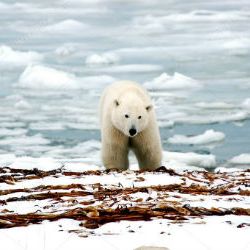Healthy Polar Bear Population In Chukchi Sea

A decade long study of Chukchi Polar Bears that took place between 2008 and 2018 found more bears than was anticipated. Even more surprising the bears were healthy despite all the sea loss in the Bering and Chukchi seas. The result does not mean that bears are not changing their behaviour. A spokesperson for the U.S. Fish & Wildlife Service which was part of the group that conducted the study says that there are no signs yet that the Chukchi bears are experiencing any negative physiological or physical effects.
Behavioural changes spotted
The spokesman goes on to add that does not suggest there have been no changes in behaviour and distribution as it relates to sea ice loss. In actual fact the bears seem to be doing rather well. The ones that were studied had healthy body weights with some weighing in excess of the average weight of a polar bear more than two decades ago. Hair, blood and fat samples suggest that the Chuckhi polar bears are much less likely to be fasting than the polar bears that roam the Beaufort Sea which means they have plenty to eat.
Sustainable harvest
The study estimates there are roughly 3,000 polar bears in the Chukchi Sea. Prior to the study it was thought to be much closer to 2,000. The population means the sustainable harvest can be increased to 85 bears which is split between subsistence hunters in Russia and America. Despite that fact, hunting bears may become harder for the people of Alaska. The shorter sea ice means that bears are no longer visiting the Western Alaskan coasts as much as they used to do.
Bears are now better off
Bears are actually now better of remaining on the sea ice with the opportunity to hunt and when they do visit land it is usually on the Russian coast and Wrangell Island. Whilst the bears that were tagged were indeed healthy, their movement and lifestyle patterns have changed. The study found the bears now spend up to a month longer on shore which is not healthy. This is because when polar bears are on land, they must fast for that period of time they are ashore unless a whale washes up and are mostly resting instead of feeding.
Less sea ice problematic for females
Double the number of female polar bears now spend their summers on land, 39 per cent of females today do that compared to just 20 per cent during the 1980’s. The researchers say this is a particular problem for females who end up spending time away for their food source before wintering with their new cubs in a den. The ice coverage in region has become worse, so whilst that has changed where polar bears decide to roam, it also affects the ability of humans to study them.



